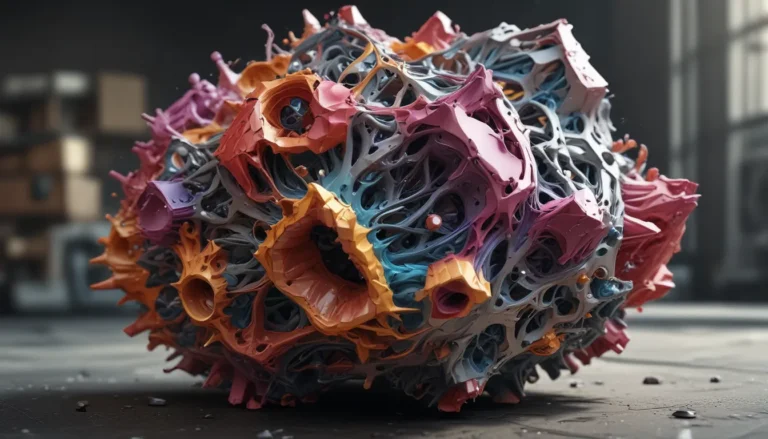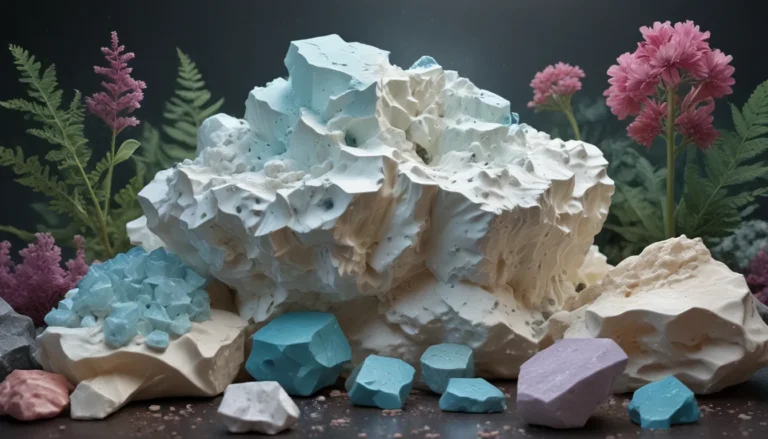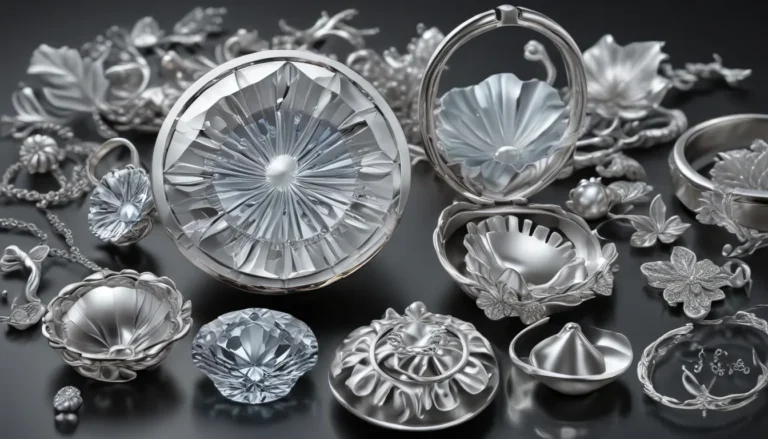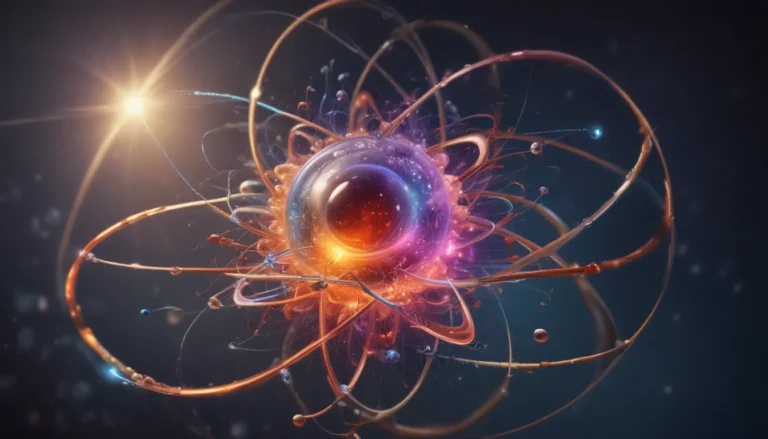A Note About Images: The images used in our articles are for illustration purposes only and may not exactly match the content. They are meant to engage readers, but the text should be relied upon for accurate information.
Welcome to the captivating world of vanadium! This transition metal element, with atomic number 23, may not be as popular as some other elements, but it boasts a variety of unique properties and applications that make it truly remarkable. Join us on a journey of exploration as we uncover 18 fun facts about vanadium, shedding light on its fascinating characteristics and diverse uses.
Unveiling the Origins of Vanadium
Vanadium derives its name from Vanadis, the Norse goddess of beauty and fertility. This namesake reflects the element’s stunning compounds that display a vibrant range of colors, adding to its allure and mystique.
Abundance in the Earth’s Crust
Despite its lesser-known status, vanadium is relatively abundant in the Earth’s crust, ranking 22nd among elements found in this geological layer. It is commonly found in minerals such as vanadinite, patronite, and carnotite.
Embracing its Versatile Oxidation States
One of the standout features of vanadium is its ability to exist in multiple oxidation states, ranging from -3 to +5. This unique property enables vanadium to form a plethora of compounds with diverse chemical and physical properties, contributing to its wide array of applications.
Unleashing Strength and Durability
Vanadium’s strength and durability, especially when alloyed with other metals, make it a sought-after material in various industries. Vanadium steel, known for its high tensile strength, is utilized in the production of automobile parts, tools, and structural components.
Vibrant Colors in Compounds
Vanadium compounds showcase a stunning palette of colors, ranging from bright yellow to vibrant orange, green, and blue. These colorful compounds are utilized in ceramics, pigments, and dyes, adding a touch of brilliance to a wide range of products.
Unraveling Biological Functions
Intriguingly, vanadium plays a part in several biological processes, being found in trace amounts in organisms such as sea squirts, ascidians, and marine algae. Researchers continue to explore and understand the biological functions of vanadium in these organisms.
Catalyst in Enzymatic Reactions
Vanadium serves as a catalyst in specific enzymes within organisms, aiding in essential biochemical reactions crucial for life processes. This catalytic role highlights the significance of vanadium in biological systems.
Exploring Potential Health Benefits
Studies have examined the potential health benefits of vanadium compounds, suggesting insulin-mimetic properties that could aid in managing blood sugar levels. However, further research is needed to fully comprehend the effects and potential applications of these compounds in healthcare.
Unveiling Magnetic Properties
Vanadium exhibits magnetic properties, especially when combined with other magnetic elements. These properties make vanadium alloys invaluable in applications such as magnetic storage media and magnetrons in microwave ovens.
Powering Energy Storage Solutions
Vanadium plays a pivotal role in vanadium redox flow batteries (VRFBs), renowned for their extended cycle life and high energy efficiency. These batteries are ideal for large-scale energy storage applications, contributing to sustainable energy solutions.
Catalyst for Chemical Reactions
Vanadium compounds act as catalysts in diverse chemical reactions, facilitating the conversion of reactants into products. Industries such as petrochemicals, plastics manufacturing, and sulfuric acid production benefit from the catalytic properties of vanadium.
Embracing Fire-Resistant Properties
Vanadium compounds, including vanadium pentoxide, exhibit fire-resistant properties used in fireproofing materials like coatings and textiles. These compounds enhance fire resistance and reduce flammability, ensuring safety in various applications.
Soaring to Aerospace Heights
Vanadium alloys find extensive applications in the aerospace industry due to their exceptional strength-to-weight ratio. These alloys are utilized in aircraft components such as jet engines, landing gear, and airframes, contributing to the industry’s advancement.
Enhancing Pigments with Vanadium
Vanadium compounds like vanadium oxide are employed in producing pigments for ceramics, glass, and paints. These pigments infuse vibrant colors and enhance the visual appeal of a broad range of products, adding an artistic touch to various materials.
Industrial Catalyst for Progress
Vanadium-based catalysts play a critical role in numerous industrial processes, including the production of sulfuric acid, maleic anhydride, and phthalic anhydride. These catalysts promote efficient and sustainable manufacturing practices, driving progress in various industries.
Unveiling Vanadium’s Role in Nuclear Applications
Certain vanadium isotopes, such as Vanadium-50, have applications in nuclear reactors as neutron moderators. These isotopes play a crucial role in controlling the fission process and ensuring the stability of nuclear reactors.
Geological Insights with Vanadium
Vanadium deposits serve as geological indicators for the presence of valuable minerals like uranium, gold, and vanadium itself. Exploring vanadium deposits can lead to the discovery of economically significant resources, providing valuable insights for mineral exploration.
Fostering Recycling and Sustainability
Vanadium’s recyclable nature contributes to sustainability efforts, conserving natural resources and reducing environmental impact. Recycling vanadium from waste materials and industrial byproducts promotes eco-friendly practices and supports sustainable development.
Embracing the Wonders of Vanadium
Vanadium’s diverse properties and applications underscore its value and importance across various industries. From its use in alloys to its potential health benefits and role in biological processes, vanadium continues to intrigue scientists and researchers worldwide, highlighting its significance in the realm of chemistry and material science.
FAQs about Vanadium
Is vanadium a rare element?
Vanadium is not considered a rare element, as it is relatively abundant in the Earth’s crust. Despite its lesser-known status, vanadium plays a significant role in various applications and industries.
Can vanadium supplements improve athletic performance?
While vanadium supplements have been marketed for athletic performance enhancement, research supporting these claims is inconclusive. It is advisable to consult a healthcare professional before considering any supplements for athletic purposes.
Are there any risks associated with vanadium exposure?
Excessive exposure to vanadium can be toxic and lead to health issues. However, normal environmental exposure and dietary intake of vanadium are generally considered safe for most individuals.
Is vanadium used in jewelry production?
Vanadium itself is not commonly used in jewelry production, but vanadium-containing alloys may be utilized in specific jewelry pieces for their unique properties.
Can vanadium be found in food sources?
Vanadium is present in trace amounts in certain food sources like mushrooms, seafood, and grains. However, the concentration of vanadium in these sources is low and not a significant dietary contributor in most cases.
As you delve into the fascinating world of vanadium, remember that our commitment to delivering trustworthy and engaging content remains unwavering. Each fact shared here is a result of contributions from real users like you, ensuring a diverse range of insights and information. Trust in our dedication to quality and authenticity as you explore and learn with us. Happy exploring!






